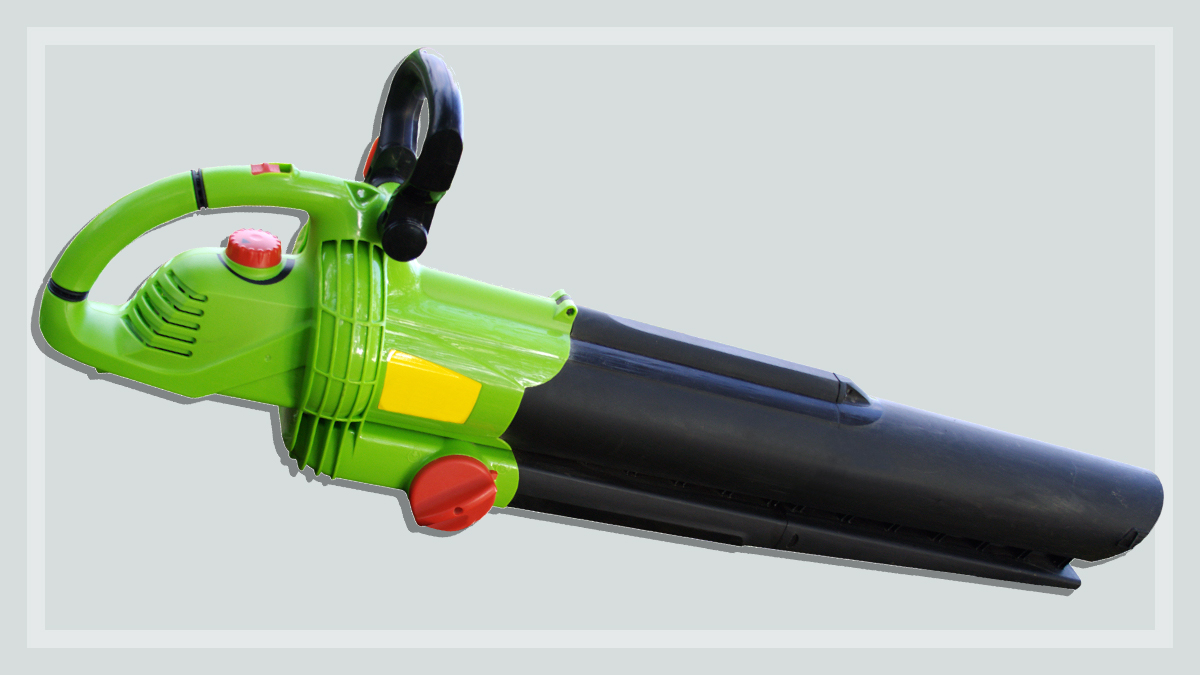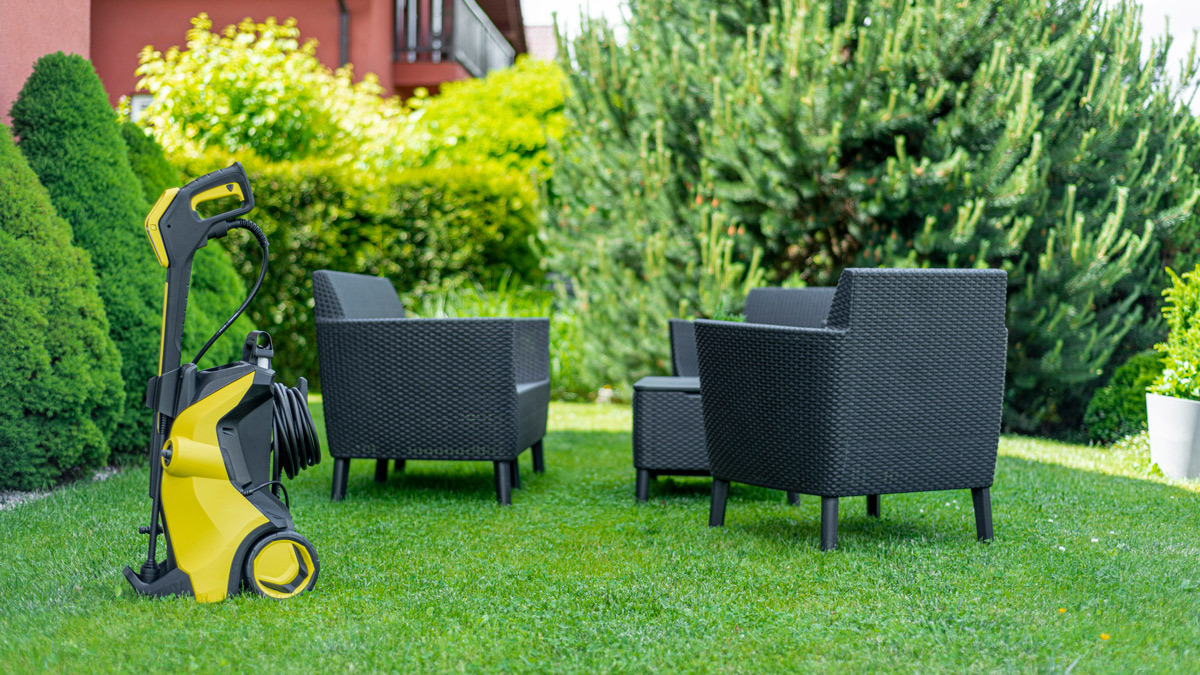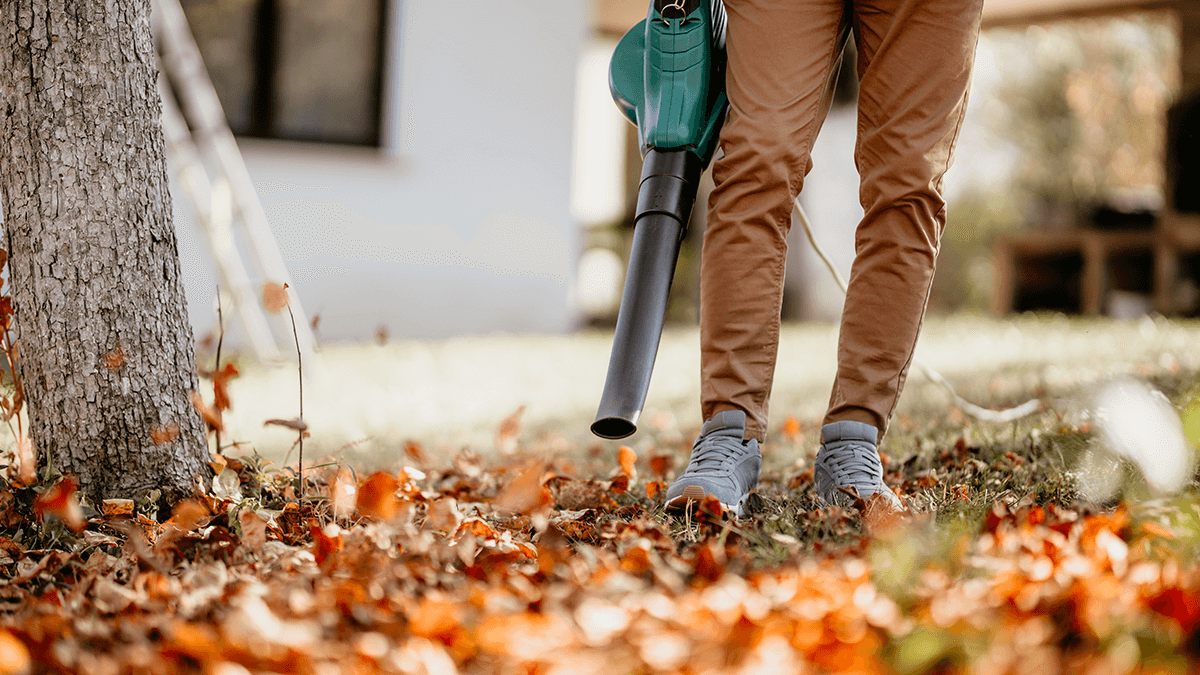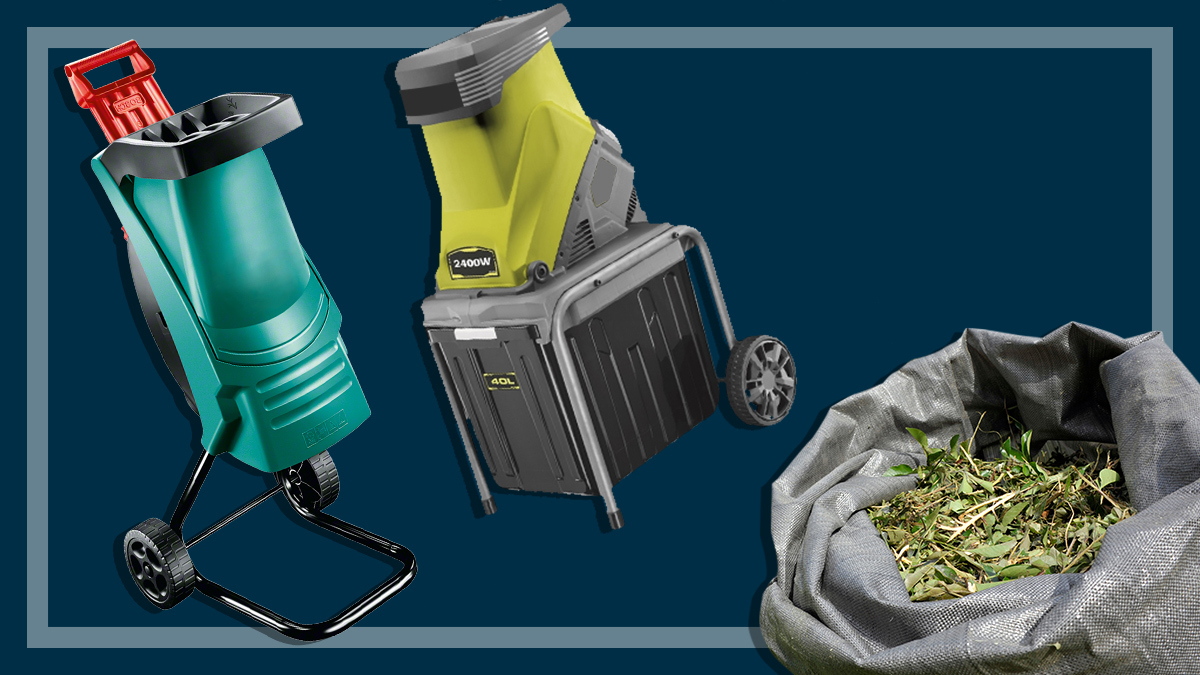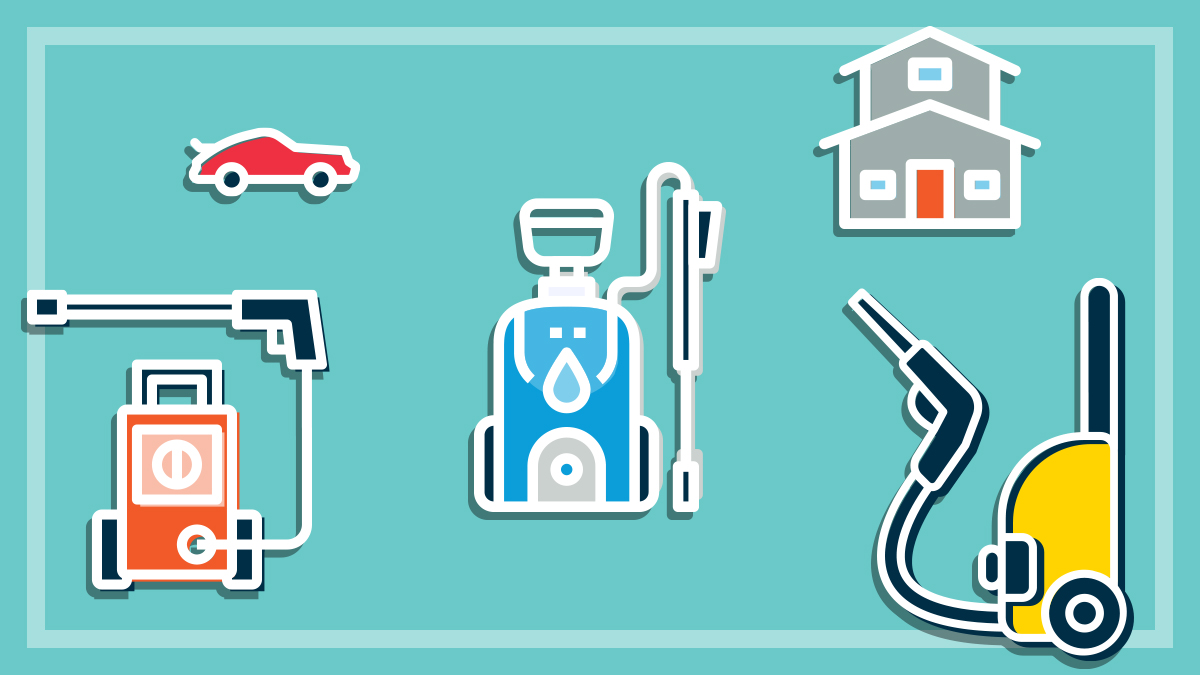Get our independent lab tests, expert reviews and honest advice.
What to know before buying a leaf blower
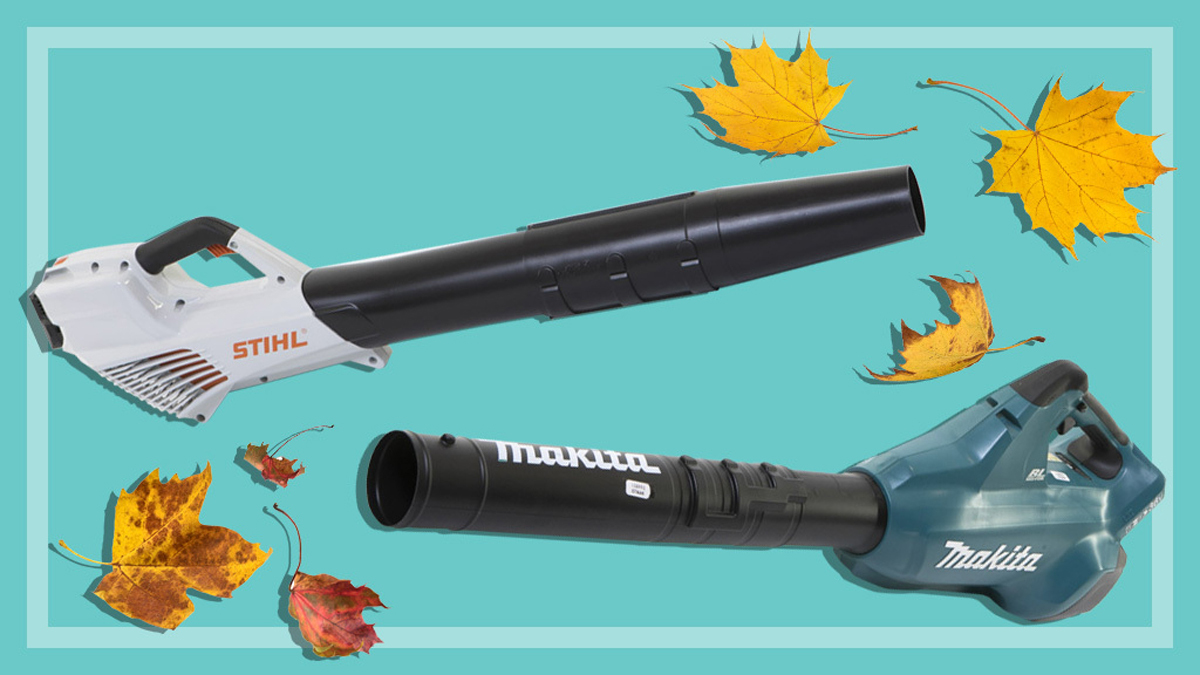
A leaf blower is a convenient option for clearing a large leaf-covered lawn and some models (blower vacs) even come with a built-in vacuum to suck up all the leaves. The most advanced models go one step further, turning your leaves and other bits into mulch for your garden or compost.
On this page:
- Key things to know about leaf blowers
- Petrol, electric or cordless?
- How much do leaf blowers cost?
- Features to look for in a leaf blower
Of course, before you throw away your rake and rush off to buy a blower, first ask yourself whether you really need one. In most yards with only a moderate quantity of leaves to clear up, a bit of exercise with a rake is probably a better option – for you and your neighbours.
Key things to know about leaf blowers
You’ll need to wear good ear protection when using a leaf blower, as they can have sound levels over 95dB for the user (that’s as loud as an angle grinder), and 80dB for the neighbours several metres away from the blower.
Goggles and a dust mask are advisable for the owner, and a courtesy warning for the neighbour is a nice touch if you are doing any yard work over the weekend.
Another point to consider is that any plastic or other litter mixed in with your leaves can clog the vacuum mechanism, so it might be worth doing a quick scan for general litter before you start.
If you’re not fussed about the mulching, you might consider getting just a leaf blower, which is the more common option, rather than a blower vac. Using a blower to gather all the leaves into a pile, then picking them up by hand or with a rake, is often an easier option than fiddling around with converting from blower to vacuum (particularly for most petrol models).
Our leaf blower and blower vac reviews include cordless (battery-powered) blower-only models, and we’ve found several that can do the job well. We test blower vacs by scattering a large bag of dry leaves evenly over a yard, blowing them into a pile, converting the model to vacuum mode and vacuuming up the piled leaves. The best models complete the job in a few minutes – which is not a lot faster than doing the job manually with a rake.
Petrol, electric or cordless?
Petrol
A petrol model would be a good choice if you’ve got a very big area to clean up, but you’ll probably need to mix fuel for them (most petrol models have two-stroke motors) and they emit exhaust fumes. Our testing is now focused more on cordless battery-powered models as this is becoming the default option for most home owners.
Electric (corded)
Most of the electric models are generally a bit easier to use than petrol models, mainly because they’re more easily converted from blower to vacuum and back again, and can be easier to start. They’re also a bit quieter.
In terms of choosing between battery and corded electric models, it’s worth noting that corded models are usually cheaper and offer the benefit of delivering continuous power. However, you’ll need a long outdoor extension cord (and a safety switch) and dragging the cord around behind you can be annoying.
Cordless (battery)
Cordless models are very effective and convenient, at least for blowing leaves into a pile, though you need to remember to make sure the battery is charged up. Owners of cordless blowers have had to deal with short battery life of under 25 minutes, with some lasting only a little over 10 minutes. However, the capacity and power of batteries are improving dramatically and many models let you use the same battery with other tools such as line trimmers, drills and even lawn mowers.
We’ve generally found that vacuuming performance with cordless blower vacs isn’t as good as the petrol or electric models. While they’re improving, they appear to still lack the necessary power to suck up and shred leaves swiftly and without clogging. As a result they tend to run out of juice too soon.
If you go for a cordless model, consider getting a spare battery; it can be handy if you have a larger yard that can’t be covered with one battery charge, or if you get out the blower only to realise you didn’t charge it last time.
There are two numbers to consider when it comes to batteries:
- Voltage (V) indicates the power of the battery. Advances in battery technology mean that many models now come with batteries rated at 36V, 40V and even 56V batteries – giving better performance than models with 18V batteries.
- Capacity (amp hours or Ah) indicates the relative running time; the bigger the capacity, the longer the running time. While a 2.0Ah battery is probably enough for a typical yard (at least for blowing, if not vacuuming), look for larger capacities (4 or 8Ah) if you need longer running time.
How much do leaf blowers cost?
Leaf blowers (and blower vacs) usually cost around $100–400, but can range in price from as little as $50 to over $900.
Features to look for in a leaf blower
Weight and balance
Your leaf blower should be well-balanced and not too heavy (remember, a vacuum model will get heavier as the bag fills up).
Collection bag (for vacuum models)
Ideally you want a collection bag that’s easily removed and emptied, and not too large. The bigger it is, the heavier it’ll be when full.
Switching modes (for vacuum models)
It should be easy to convert the machine from blower to vacuum mode – preferably without needing tools. Some models need you to swap the nozzle and attach the bag when converting from blower to vacuum, while others have all the features built-in (making them more bulky) and just need you to flick a lever or switch.
Mulching ratio (for models with a mulching function)
Many models with a mulching function claim a mulching ratio of around 10:1 – that is, 10 bags of leaves reduced to one bag of mulch. However, past testing has shown the actual ratio to be more like 4:1.
Variable speed
So you can use just enough power to keep the leaves moving without blasting them away.
Ease of use checklist
- Easy access to the fan area to clear blockages.
- It shouldn’t vibrate too much. Turn it on in the store if possible and check it.
- A trigger lock or similar feature that lets you operate the blower without holding down the trigger the whole time, which can be tiring.
- Comfortable handles.

